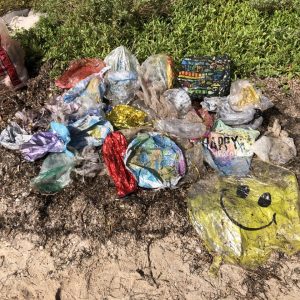Helium and mylar balloon releases have received more and more attention in recent years. While balloon releases often occur as a celebratory gesture, the balloons eventually return back to Earth, where they become litter and can harm wildlife. Since Miami-Dade County’s coastline shares a border with both Biscayne Bay and the Atlantic Ocean, these balloons wash up on beaches or on the surface of the water. The balloon litter is such a problem, in fact, that several organizations who work on beaches or on the water keep track of found balloons, including the Miami-Dade County Sea Turtle Conservation Program and Biscayne National Park.

This past Monday, Governor DeSantis approved a new piece of environmentally-protective legislation: House Bill 321, which makes the intentional release of balloons illegal. This new rule will go into effect on July 1.
Hopefully, this regulation will result in a drastic reduction of balloon litter. For context, Biscayne National Park has removed:
-
-
- January 2024-present: 1,600 balloons (this is already more balloons than were removed throughout 2023)
- All of 2023: 1,560 balloons
-
It will be interesting to see how these counts change upon implementation of this bill and subsequent education. The enforcement component of House Bill 321 mandates that the intentional release of even one balloon will carry a $150 fine per violation. Balloon quantities over 15 pounds would incur a fine that can reach up to $1,000. The Florida Department of Environmental Protection’s solid waste management trust fund would receive $50 of the fine.
If you are looking for a more environmentally friendly way to recognize a loved one or mark a special event, don’t despair! Please check out my blog post that features several excellent suggestions. If you would still like to purchase and use balloons for your event, take great care to make sure that they are properly secured, as well as dispose of them properly once the event is over.
For more information, please visit: www.balloonsblow.org.
 2
2
